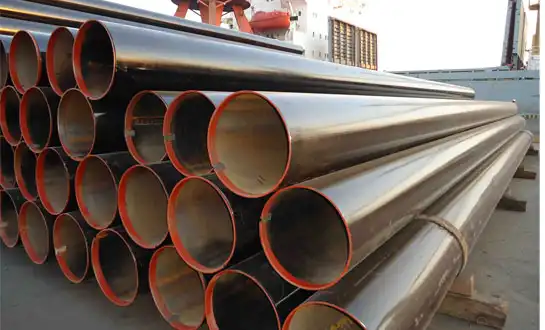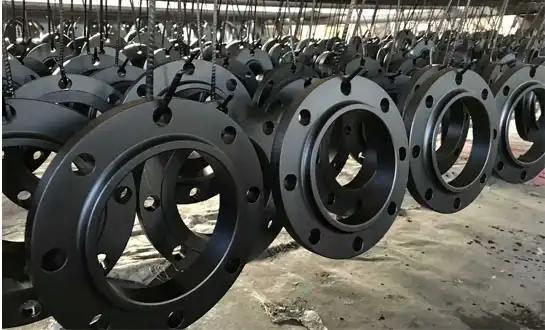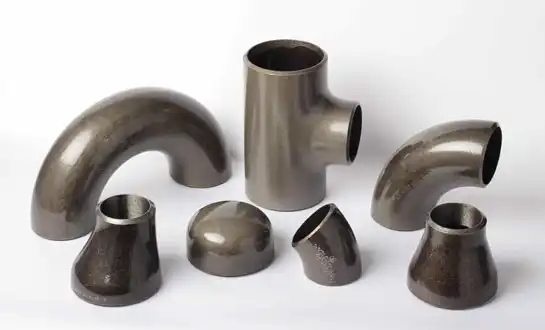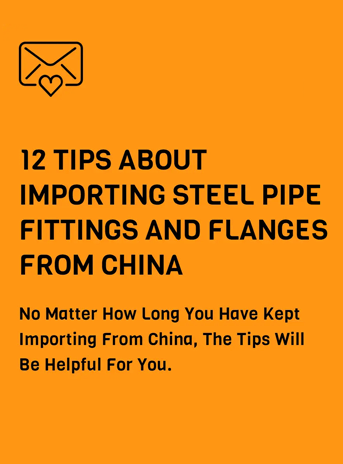Why Forged Steel Fittings Last Longer in Harsh Environments?
When working in industries with high temperatures, high pressures, and toxic materials, the parts of the pipes that are used have a direct effect on how reliable the system is and how safe it is to use. Forged steel fittings have become the best choice for harsh places like chemical processing plants and offshore oil platforms. Their longer life than cast or fabricated alternatives comes from basic differences in how they are made and the properties of the materials that are made. When engineers know why forged steel fittings work better in harsh conditions than other choices, they can make decisions that save money on upkeep and make the workplace safer. Forged steel fittings demonstrate exceptional durability in harsh environments because the forging process refines the grain structure, eliminates internal voids, and creates continuous metal flow patterns that resist crack propagation. Unlike casting methods that can introduce porosity and weak points, forging compresses the steel under tremendous pressure, aligning the grain structure along the fitting's contours. This directional grain flow provides enhanced mechanical strength precisely where stress concentrations occur. Additionally, forged steel fittings exhibit superior corrosion resistance due to their dense, uniform microstructure that minimizes pathways for corrosive agents.
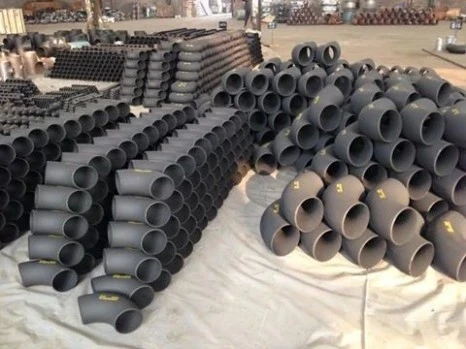
Superior Material Properties Through the Forging Process
Grain Structure Refinement and Directional Strength
The forging process fundamentally transforms raw steel into components with exceptional mechanical properties through controlled plastic deformation at elevated temperatures. When steel billets are subjected to compressive forces during forging, the coarse grain structure becomes significantly refined. This grain refinement breaks up large crystalline structures and promotes smaller, more uniform grains throughout the material. The resulting fine-grained microstructure provides forged steel fittings with increased tensile strength, improved toughness, and enhanced fatigue resistance compared to cast alternatives. Furthermore, the forging dies shape the metal flow so that grain boundaries align with the fitting's geometry, creating directional strength that naturally reinforces high-stress areas. This metallurgical advantage becomes particularly critical in harsh environments where components face multidirectional loading, thermal expansion stresses, and sudden pressure fluctuations.
Elimination of Internal Defects and Porosity
One of the most significant advantages of forged steel fittings lies in the manufacturing process's ability to eliminate internal defects that compromise component integrity. Casting processes inevitably introduce microshrinkage cavities, gas porosity, and inclusion clusters that create stress concentrations and potential failure sites. These internal discontinuities become particularly problematic in harsh environments where corrosive media can penetrate through connected porosity, leading to internal corrosion. The forging process eliminates these concerns by consolidating the material under extreme pressure, closing any voids and ensuring complete material continuity throughout the component. Forged steel fittings thus provide a solid, defect-free structure that resists both internal and external corrosion mechanisms. This defect-free structure translates directly to enhanced reliability, as the component's performance depends entirely on the base material properties rather than being limited by manufacturing imperfections.
Enhanced Mechanical Properties for Extreme Conditions
Forged steel fittings exhibit mechanical properties that substantially exceed minimum specification requirements, providing safety margins invaluable in unpredictable harsh environments. The work hardening during forging increases yield strength and ultimate tensile strength beyond what heat treatment alone can achieve in cast materials. This enhanced strength allows forged steel fittings to withstand higher operating pressures and accommodate pressure surges without permanent deformation. The improved ductility and toughness resulting from refined grain structure mean these fittings can absorb impact energy and accommodate thermal expansion stresses without brittle fracture, even at temperature extremes. These enhanced mechanical properties ensure that forged steel fittings perform reliably throughout their service life despite exposure to chemical attacks, thermal cycling, and mechanical vibration.
Corrosion Resistance and Chemical Stability
Dense Microstructure as a Corrosion Barrier
The exceptional corrosion resistance of forged steel fittings stems from their dense, uniform microstructure that presents minimal pathways for corrosive agent penetration. The forging process creates a microstructure with tightly packed grains and minimal grain boundary area per unit volume, reducing high-energy sites where corrosion preferentially occurs. This densification extends throughout the component thickness, ensuring that even if surface corrosion initiates, the attack rate diminishes as it progresses inward. Forged steel fittings also exhibit more uniform chemical composition distribution than cast alternatives, eliminating localized segregation zones that could accelerate corrosion. The absence of surface-connected porosity prevents coating undercutting and hidden corrosion development beneath apparently intact coatings.
Resistance to Stress Corrosion Cracking
Stress corrosion cracking represents one of the most insidious failure mechanisms in harsh environments. Forged steel fittings demonstrate superior resistance due to their uniform grain structure and absence of residual porosity, which eliminate stress concentration sites where cracks typically initiate. The directional grain flow creates barriers to crack propagation, while chemical homogeneity eliminates localized composition variations that create electrochemical potential differences. In chloride-containing environments and sour gas service, forged steel fittings have demonstrated substantially longer service lives than cast alternatives.
Performance in Acidic and Alkaline Media
Forged steel fittings excel in both acidic and alkaline environments due to their dense microstructure and uniform alloying element distribution. In acidic service, the tight grain structure limits hydrogen diffusion into the material, reducing the risk of hydrogen-induced cracking. The absence of internal laminations prevents hydrogen accumulation at internal interfaces. When alloyed grades of forged steel fittings are specified, the uniform distribution of chromium and molybdenum provides consistent protection across all surfaces and through the component thickness.
Long-Term Reliability and Operational Advantages
Reduced Maintenance Requirements and Lifecycle Costs
The initial cost premium associated with forged steel fittings becomes negligible when evaluated against their superior service life and reduced maintenance requirements. Components that resist corrosion and remain leak-free throughout decades of service eliminate recurring costs of inspection, repair, and replacement. Unplanned shutdowns for emergency repairs represent some of the highest costs in industrial operations. Forged steel fittings dramatically reduce these unplanned maintenance events by providing predictable, reliable performance. Over a typical industrial facility's operational life spanning thirty to fifty years, the cumulative cost savings from reduced maintenance easily justify the initial investment in premium forged steel fittings.
Safety and Risk Mitigation in Critical Applications
In applications involving hazardous fluids or extreme pressures, the enhanced reliability of forged steel fittings provides risk mitigation that transcends financial considerations. Forged steel fittings reduce risks through their superior mechanical properties, resistance to failure mechanisms, and predictable degradation characteristics that allow proactive component management. Industry standards increasingly recognize the superior performance of forged steel fittings, with some applications now requiring forged rather than cast components specifically because of the improved safety profile.
Adaptability to Evolving Operating Conditions
Industrial facilities rarely operate under static conditions throughout their service lives. Forged steel fittings provide operational flexibility by offering performance margins that accommodate evolving conditions without requiring premature replacement. The superior mechanical properties mean that systems initially designed for moderate service can often be uprated for more demanding conditions when forged steel fittings were specified originally. This adaptability extends the useful life of capital investments and reduces the disruption associated with system modifications.
Conclusion
The superior longevity of forged steel fittings manufacturer and forged steel fittings in harsh environments results from fundamental advantages in material properties, corrosion resistance, and structural integrity that stem directly from the forging manufacturing process. Through grain refinement, defect elimination, and optimized microstructure, these components provide reliability that reduces lifecycle costs while enhancing safety in critical applications.
HEBEI RAYOUNG PIPELINE: Your Trusted Forged Steel Fittings Manufacturer
At HEBEI RAYOUNG PIPELINE TECHNOLOGY CO., LTD., we specialize in delivering premium forged steel fittings engineered for the most demanding applications. Our comprehensive product range includes buttweld fittings, reducers, and flanges manufactured to international standards and backed by GOST-R and SGS certifications. As leading pipes and fittings manufacturers with ISO 9001:2015 certification, we combine advanced metallurgical expertise with rigorous quality control to ensure every forged steel fitting meets the performance expectations that harsh environments demand. Whether your project involves chemical processing, power generation, or offshore installations, our technical team stands ready to recommend optimal solutions tailored to your specific operating conditions. Contact us today at info@hb-steel.com to discover how HEBEI RAYOUNG's forged steel fittings can enhance your system reliability and reduce long-term operational costs.
References
1. Davis, J.R. (2006). Corrosion of Weldments. ASM International, Materials Park, Ohio.
2. Roberts, W.L. (1983). Hot Rolling of Steel. Manufacturing Engineering and Materials Processing Series, Marcel Dekker, New York.
3. Fontana, M.G. (1986). Corrosion Engineering. Third Edition, McGraw-Hill Book Company, New York.
4. Dieter, G.E. (1988). Mechanical Metallurgy. SI Metric Edition, McGraw-Hill Book Company, Singapore.
5. Jones, R.H. (1992). Stress-Corrosion Cracking: Materials Performance and Evaluation. ASM International, Materials Park, Ohio.
6. Bhadeshia, H.K.D.H. and Honeycombe, R.W.K. (2017). Steels: Microstructure and Properties. Fourth Edition, Butterworth-Heinemann, Oxford.

Need a quote? Want to see samples? Just say hello. We’re friendly. We’re fast. And we’re ready when you are.
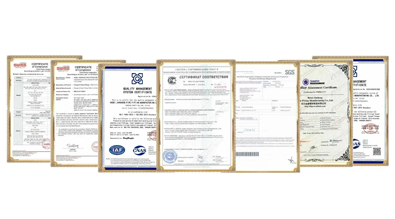
Welcome to RAYOUNG – Strong Pipes, Stronger Promise
